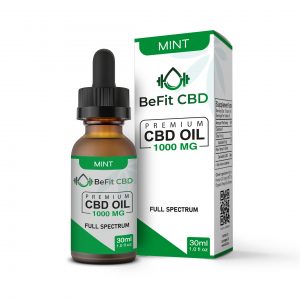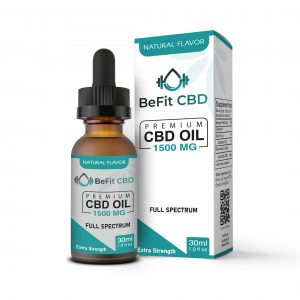BeFit CBD offers a new line of products that combine advanced science with the finest organic and natural ingredients, engineered to deliver powerful relief and relaxation.
How To Use CBD Oil For Pain?
Topically: You can use CBD cream that contains CBD oil so that it can be applied topically directly to affected pain areas. By applying locally, you can reduce pain and inflammation to treat stiff, achy joints. Therapeutic salves are also sometimes available, which are also applied directly to your skin. Conditions relating to pain are one of the main reasons why people visit physicians.
Nowadays, CBD oil has become so popular that people use it to gain relief from different types of pain instead of drugs. CBD oil is a derivative of the cannabis plant, and it has many of the organic chemical compounds found in the hemp or marijuana plants.
CBD oil does not generate the “high” feeling that usually comes from THC, and this makes it safe for even children.
How Much CBD Oil For Pain?
Most CBD topicals sold today range in concentration from 250 mg to 1500 mg. People with severe pain or discomfort typically find that high-concentration topicals work best.
Studies relating to CBD oil have shown the potency of CBD for pain. CBD has the potential to effectively reduce inflammation, pain, and other severe side effects relating to pain.
Many individuals consider it as a better alternative in contrast to traditional pills or other drugs.
You can skip pain killers: How does CBD oil interact with YOUR body?
The human body has a network system known as the endocannabinoid system (ECS), which controls bodily activities relating to cannabis. It has two essential receptors, the CB1 and CB2 receptors, and it uses these receptors to give cannabinoids their effects on the human body.
CBD explicitly communicates with the CB2 receptor to deliver several remedial impacts for managing pain. Furthermore, its cooperation with the CB2 receptor facilitates the negation of mind-altering effects, which results from the interaction of THC and the CB1 receptor.
Where does CBD oil come from? Marijuana and hemp are two unique types of cannabis plants. It is, nonetheless, critical to take note that CBD gotten from either hemp or cannabis has similarities.
Pot plants have a high grouping of cannabidiol by dry weight, but when the oil is removed from the two sources, the distinction gets irrelevant. On the other hand, Hemp is a legit source for CBD due to its faster growth and lack of mind-altering effects that come from THC.
What type of pain does CBD oil relieve?
CBD can potentially relieve different types of pain, including neuropathic pain, arthritis pain, nociceptive pain, and other kinds of pain that don’t fall into any category.
Neuropathic pain
This pain is derived from injury to the nervous system. This category involves pain resulting from medical conditions like multiple sclerosis and sciatica.
Nociceptive pain
This type of pain results from different kinds of damage to pain receptors in the brain tissues. This category involves pain resulting from conditions such as finger stubs, bee stings, arthritis, and other related conditions.
Other types of pain that can be handled by CBD may include pain resulting from conditions such as fibromyalgia, migraine, and irritable bowel syndrome. Although people have several reasons for having pain, the brain has an important role when it comes to pain.
How CBD oil is used for pain
Broad research on the effects of cannabinoids, like CBD oil for managing pain-related conditions like multiple sclerosis, diabetes, and fibromyalgia, have been successful so far. Many reports suggest that cannabidiol can be very useful in managing neuropathic pain.
This kind of pain is regularly an aftereffect of peripheral nerve injury. Also, CBD tinctures are most likely the best choice when it comes to pain relief.
Research studies have shown that the activation of the CB2 receptor can be useful in regulating pain that is hard to treat with other medicines.
Given that CBD connects itself to this specific ECS receptor, it may be valuable in igniting the channels that lessen pain.
Cannabinoids like CBD can also alleviate pain by targeting and afterward igniting the receptors of the central nervous system. These specific receptors are found in particular parts of the spinal cord and brain. Furthermore, they are essential in alleviating neuropathic and inflammatory pain.
The occurrence of inflammatory elements like prostaglandins regularly closes down these receptors, which results in more pain sensation. However, CBD is fit for reactivating these receptors and lessening the effectiveness of pain.
Fibromyalgia leads to severe pain, and it’s usually followed by chronic pain that results from the disruption of the central nervous system.
As indicated by numerous studies, ECS deficiency might play a role in the reduced pain threshold and different variations that result from fibromyalgia.
When an individual starts feeling increased pain sensitivity, which results from depression of the ECS, then the use of CBD might lower pain sensitivity and bring relief.
Furthermore, in different studies, individuals who have fibromyalgia experienced extraordinary relief from anxiety, pain, insomnia, mood disturbances, and muscle spasms after using cannabis compounds.
CBD Dosage Comparison Chart
| CBD Product | Recommended for | How long to take effect | How long it lasts | Pros | Cons |
| Ingested CBD (edibles, capsules, drink powders) | Those who want more control over dosage or to be more discreet | 30-60 minutes | 2-4 hours | No harm to lungs, discreet, convenient, more control over dosage | Takes a while to kick in |
| Smokeable CBD (e-cig, flower, vape) | Those with fast-acting as a priority and those that like to smoke | Instant | 45 minutes – 1 hour | Fast-acting, can help quit cigarettes, great for social situations | Non-discreet, can’t be done everywhere, could be damaging to lungs |
| Topicals (lotions, gels, balms, salves) | Those suffering from a specific pain like joint pain or skin problems | Varies widely; factors include hair growth, amount of fatty tissue, etc. | 5 hours or more | Applied directly to the problem area, metabolism isn’t an issue, long-lasting, easy to work into your routine | Can be slow to take effect; depending on the problem, could take prolonged use to achieve the desired results |
| Transdermal Patches | Those who don’t have regular access to consuming other means, those with chronic pain | Varies widely; factors same as above | 1-2 days | Lasts the longest, metabolism isn’t an issue, steady release of CBD into the bloodstream | Could take hours for effects to kick in |
In-depth studies
According to a study conducted on animals with arthritis pain, the topical utilization of CBD oil facilitated lower rates of inflammation and pain. Another animal study discovered the benefits of CBD for neuropathic pain and chronic inflammation.
Resources:
- Epilepsy and cannabidiol: a guide to treatment. Arzimanoglou A, et al. Epileptic Disord. 2020
- Social media surveillance for perceived therapeutic effects of cannabidiol (CBD) products. Tran T, et al. Int J Drug Policy. 2020
- Cannabidiol prescription in clinical practice: an audit on the first 400 patients in New Zealand. Gulbransen G, et al. BJGP Open. 2020
- Potency Assessment of CBD Oils by Their Effects on Cell Signaling Pathways. Urasaki Y, et al. Nutrients. 2020
- Tetrahydrocannabinol and Cannabidiol Use in an Outpatient Palliative Medicine Population. Highet BH, et al. Am J Hosp Palliat Care. 2020
- A Case of Vaping TCH Oil Leading to Vaping Associated Pulmonary Injury: Our Approach to Its Diagnosis, Management, and Recommendations. Singh A, et al. Case Rep Pulmonol. 2020
Developing studies on CBD oil for pain have uncovered a synergistic impact between CBD and omega-3 fatty acids like DHA and EPA obtained from concentrated fish oils.
The association of pain-relieving and anti-inflammatory properties seem to offer a superior effect on the central nervous system in diminishing pain sensitivity.
Furthermore, many doctors believe in the healing effects of CBD oil, and that’s why they recommend it to their patients.
Conclusion
Those in need of immediate pain relief from CBD should preferably use CBD tinctures for instant relief.
CBD is non-toxic and offers a wide variety of potential health advantages when consumed. CBD is a proven pain reliever and its use for other conditions such as sleep deprivation, stress, anxiety, inflammation, pain, and other related diseases.
What’s more, the costs of CBD is not high, and even average consumers will agree with the moderate cost of CBD products.
Also, even though CBD might originate from cannabis or hemp, it still has similar effects and offers the same powerful and soothing effects when used for pain.
Furthermore, the rise of research studies has offered a lot of scientific evidence supporting the use of CBD for pain. Many patients are now hopeful that they can treat themselves from pain resulting from inflammation as well as neurodegenerative issues.
CBD oil is a perfect alternative to pharmaceutical pills, and that’s why many people continue to seek it. Its affordable nature also makes the cost accessible for many.
Nonetheless, there is a need for more detailed research on the link between CBD oil and pain management. And maybe that time, the federal government will approve it.

 FREE SHIPPING ON ALL PRODUCTS
FREE SHIPPING ON ALL PRODUCTS


